Welcome to thatlinuxbox.com Friday, January 02 2026 @ 11:44 AM UTC
Items in Grafana Panel Library are Greyed Out
- Wednesday, October 19 2022 @ 11:06 PM UTC
- Contributed by: Dan Stoner
- Views: 2,253

tldr; The underlying cause is that panels of visualization type “Graph (old)” are not able to be added to a dashboard from the Panel Library.
I have done a bit of work getting my company's PostgreSQL database servers monitored with prometheus and grafana. I put together a combined DBA dashboard that has my most-used metrics gathered all together... this includes metrics from postgres, pgbouncer, and the host systems.
I have had this little open space in my DBA Dashboard for a few months and had not yet decided what graph I wanted to put there. I finally decided I wanted to include another graph from Node Exporter.
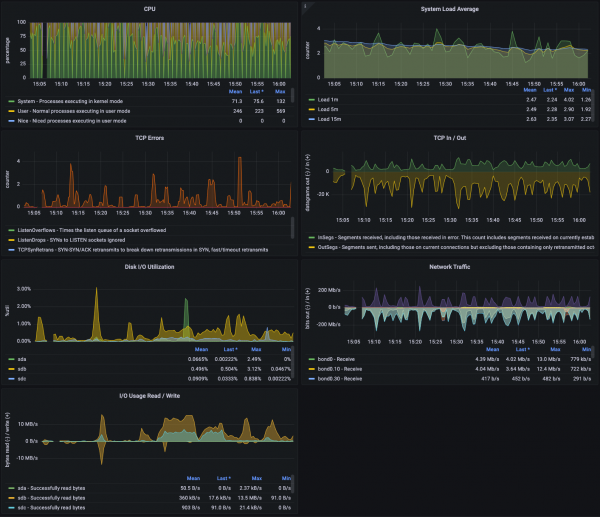
The first step is to add an existing panel of interest to the Panel Library. From there, it is straightforward to Add panel from library.
However, when I tried to add the panel from the Panel Library, most of the available panels were greyed out.
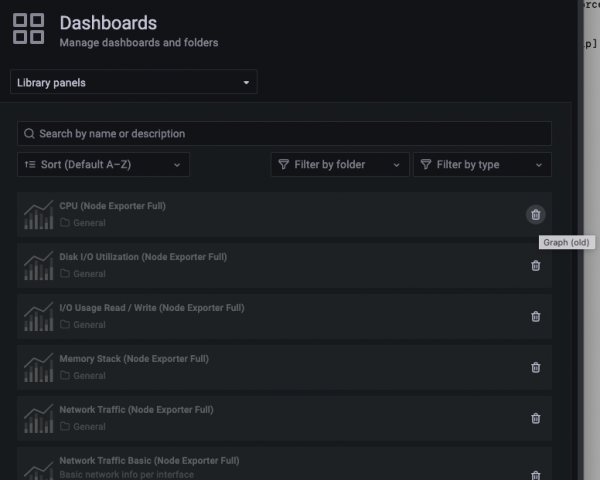
I tried various google searches like Items in Grafana Panel Library are Greyed Out or Cannot Add Panel from Library and didn't find a solution, hence the reason I am writing this blog post.
I tried Importing the latest version of the Node Exporter Dashboard from grafana.com but that did not fix the issue either.
The underlying cause is that panels containing deprecated visualization types such as “Graph (old)” are not able to be added to a dashboard from the Panel Library. It looks like Grafana is trying to kill off the deprecations and after some minor version upgrade (I could not track down the specifics) appears to be preventing that capability.
Hovering over a panel in the Panel Library will show the visualization type.
To resolve, edit the source panel and click the Migrate button. Then save the panel. At that point the panel will be of "Time series" visualization type and can be added to a dashboard from the Panel Library.
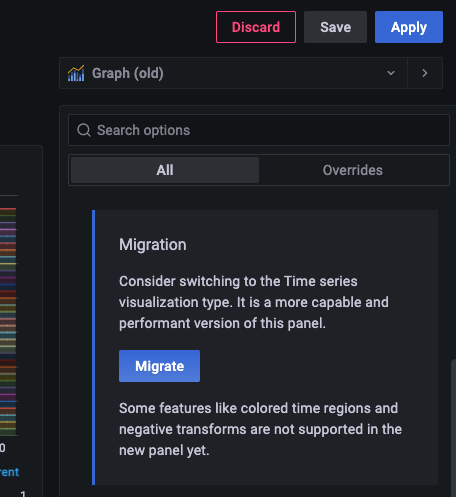
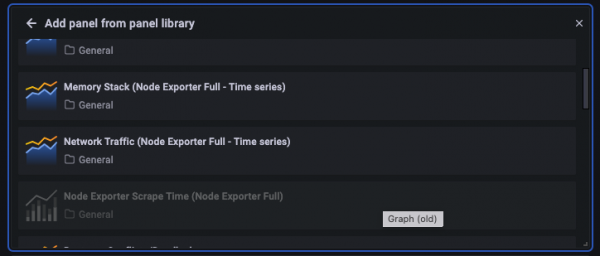
I didn't find a description of this exact behavior in the release notes.
Upgrade to at least Grafana 9.2 in order to gain the ability to Delete deprecated panels.
- Comments (0)
Valheim - Game Screenshots on Linux
- Saturday, May 08 2021 @ 12:53 PM UTC
- Contributed by: Dan Stoner
- Views: 2,483

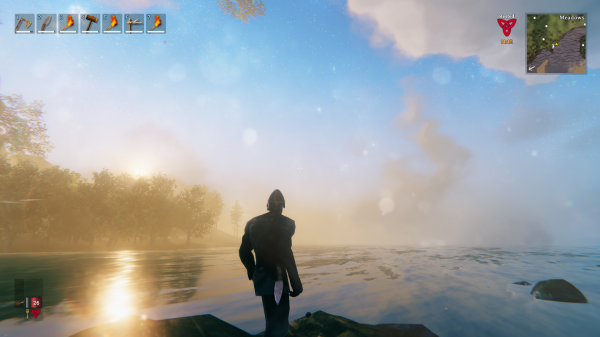
After getting tired of ARK Survival Evolved taking 15 minutes just to load, and the ongoing graphics issues on Linux that have gone unresolved for years, I decided to try something different.
Valheim is an early-access survival game that is available for multiple platforms via Steam including Linux. I have been using Vulcan and have had zero crashes or issues of any kind.
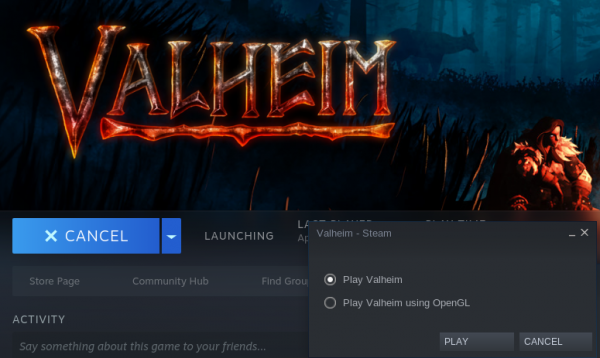
There are plenty of youtube videos and reviews of this game out there, so I won't talk much about the game itself, but the quick summary is that it is a pretty fun survival game. Gathering resources is maybe just a little tedious, and some of the rules like not being able to build without a workbench nearby can be aggravating, but otherwise I think the game finds a good balance of effort in and enjoyment out.
There are a lot of subtle things that help make this game very immersive and fun. For example, when visiting each biome the music changes. The graphics effect of hazing things in the far distance helps make the world feel large. And my real life heart definitely sped up the first time I visited the Dark Forest and saw a Troll.
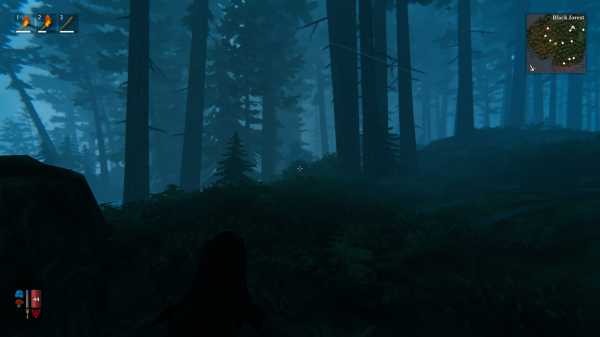

Some more screenshots follow and I also provide details on my gaming rig...
- read more (74 words)
- Comments (0)
Annotate PDF files on Linux with Xournal
- Tuesday, July 07 2020 @ 05:31 PM UTC
- Contributed by: Dan Stoner
- Views: 2,844

I use this tool only infrequently and have trouble remembering its name so I am making this blog post for it.
I use Xournal fill out PDF forms on Linux when the PDF document has no actual form fields (basically annotating over the empty blanks) so I can type on a computer instead of having to print a form, fill it out, and then scan it. This also makes the form much more legible than if I were writing on paper.
I have also used Xournal with a Wacom stylus in order to "hand write" / sign my name. Tip: Have your Wacom plugged into the computer before starting Xournal.
On Ubuntu, the package name is "xournal" in the Universe section and you start annotating a PDF by selecting from the menu File -> Annotate PDF
Forms with the little boxes for individual letters are a little challenging, but usually there is a font that comes close to the proper spacing.
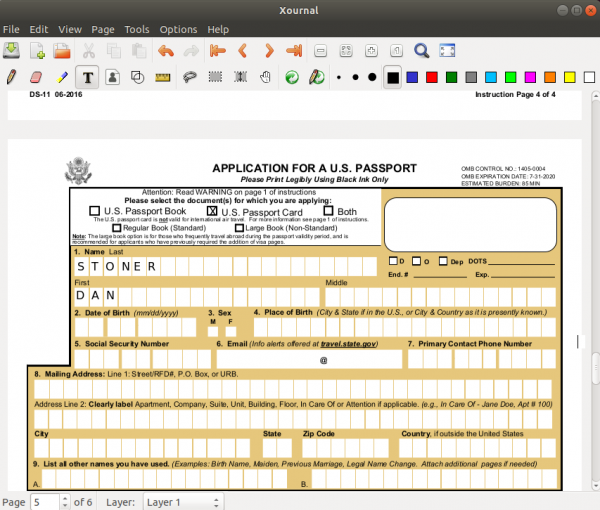
You can save your work in-progress as a Xournal file (.xoj). To get the results into a final PDF for submissions, select from the menu File -> Export to PDF.
- Comments (0)
Access Docker After Install Without Logout or Reboot
- Tuesday, March 24 2020 @ 06:48 PM UTC
- Contributed by: Dan Stoner
- Views: 7,133

By default, after installing docker on Ubuntu, normal user accounts cannot connect to the docker daemon.
$ sudo apt install docker.io
$ docker ps
Got permission denied while trying to connect to the Docker daemon socket at unix:///var/run/docker.sock
After adding one's user account to the "docker" group, a full logout and login is typically needed for the user account to receive the new group membership. And in fact, on Ubuntu running the default desktop environment, one may need to actually reboot or run an extra command such as:
$ loginctl terminate-user $USERNAME
because systemd seems to preserve a user context even after logout.
Starting a new bash login shell inside an existing terminal is definitely insufficient:
$ bash --login -i
Terminating a desktop session can be fairly inconvenient, depending on the amount of Work In Progress and document editors and browser tabs, etc.
On Ubuntu 18.04, here are steps to allow a normal user account to immediately access docker without having to log out first:
$ groups # note that "docker" will not be in list of groups
$ sudo gpasswd -a $USERNAME docker # add your specific username to the "docker" group
$ sudo grpck # verify that your group file has no syntax errors, and only the expected differences exist
[sudo] password for dan:
'dan' is a member of the 'docker' group in /etc/group but not in /etc/gshadow
$ sudo grpconv # syncs group and gshadow aka the magic command that prevents "newgrp" from generating the error: 'failed to crypt password with previous salt'
$ newgrp docker # log in to new group (starts a subshell with the new group membership attached, environment preserved)
$ groups # note that "docker" will now appear in list of groups for the user
$ docker ps
CONTAINER ID IMAGE COMMAND CREATED
STATUS PORTS NAMES
$ docker run docker/whalesay cowsay "No Logout Needed!"
___________________
< No Logout Needed! >
-------------------
\
\
\
## .
## ## ## ==
## ## ## ## ===
/""""""""""""""""___/ ===
~~~ {~~ ~~~~ ~~~ ~~~~ ~~ ~ / ===- ~~~
\______ o __/
\ \ __/
\____\______/
Thanks to the following articles which provided reference for this blog post:
https://askubuntu.com/questions/477551/how-can-i-use-docker-without-sudo
https://www.geeksforgeeks.org/grpconv-command-in-linux-with-examples/
https://askubuntu.com/questions/1045993/after-adding-a-group-logoutlogin-is-not-enough-in-18-04
- Comments (0)
Thermal Issues on Dell Latitude with Microsoft Teams for Linux
- Friday, March 20 2020 @ 06:26 PM UTC
- Contributed by: Dan Stoner
- Views: 4,051

With work from home orders due to COVID-19, I am now working remotely fulltime.
My company is relying on Microsoft Teams for chat and video conferencing. Thankfully, Microsoft released a native Linux client. Not really, it appears to be an electron app. But at least it doesn't need to run in a browser tab somewhere. And it actually works... audio, video, and screen sharing. And after using a variety of video conferencing solutions over the years, I can say that video and audio quality of Teams is quite good. Unfortunately, as of Microsoft Teams Version 1.3.00.958 (64-bit), the app is a CPU hog and causes my Ubuntu laptop to heat up. When the laptop heats up, the fan winds up like a small jet engine. This is especially noticeable in a quiet home office environment.
I spent a lot of time with i8kutils and cpufrequtils to no avail. On Linux, the Dell Latitude 5501 seems to have only three fan speeds: off, low, and high. There is no medium speed. It is possible to tweak the temperature at which those fan transitions happen, but it is not possible adjust the fan RPMs. On "low", the temperature will just continue to rise while Teams is running and eventually the fan has to kick into high (or the laptop overheat and crash).
The most significant change I was able to make to resolve the heat issue was to turn off TurboBoost. Whereas my temps were shooting up to over 90 degrees C if I tried to run the fan on "low", with TurboBoost disabled the temperature rarely goes about 50 degrees C. I disabled both Hyperthreading and TurboBoost in the system BIOS. This is disappointing to say the least, but this laptop still has 6 cores running at 1.4 GHz, which has been fine for all of the types of work I have been doing.
After disabling TurboBoost, the cpufreq-info tool shows:
- read more (138 words)
- Comments (0)








 Twitter
Twitter
 LinkedIn
LinkedIn
 GitHub
GitHub


